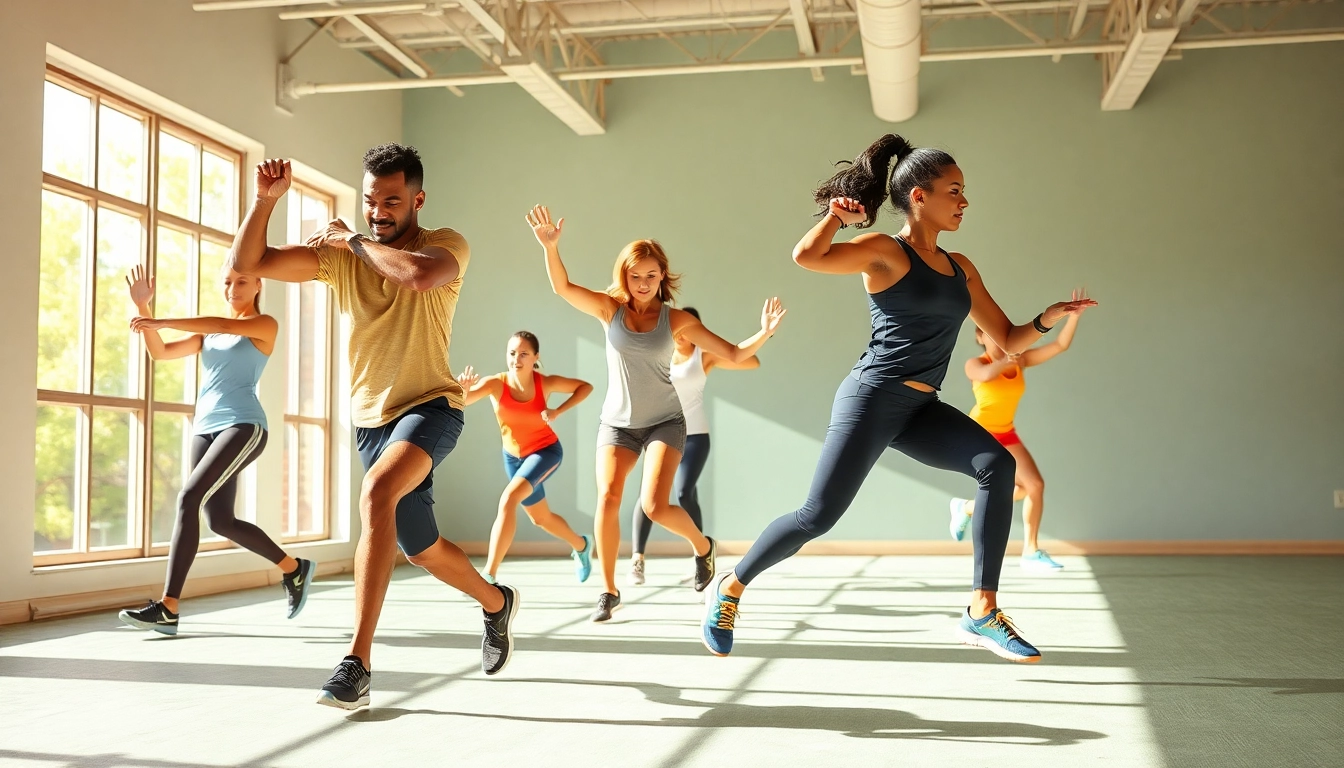Understanding Mobility Training
Mobility training is a fundamental aspect of a well-rounded fitness regimen that goes beyond mere flexibility exercises. It encompasses a range of techniques aimed at improving the body’s range of motion, enhancing overall movement patterns, and increasing functional strength. By incorporating Mobility Training into your routine, you can develop the control needed to move with ease and prevent injuries. Let’s explore the core concepts of mobility training to understand its significance in everyday life and athletic performance.
What is Mobility Training?
Mobility training combines various exercises designed to enhance flexibility, stability, and control in different joints of the body. Unlike static stretching, which mainly targets muscle lengthening, mobility training encourages dynamic movement and involves strength training elements that can help in achieving a fuller, more functional range of motion. In its essence, mobility training is about teaching the body how to use its full physical capabilities.
Benefits of Mobility Training
The advantages of implementing a mobility training routine are vast and varied:
- Enhanced Range of Motion: Regular mobility practices can lead to improved flexibility in muscles and joints, allowing for smoother movements.
- Reduced Injury Risk: By increasing stability and strength in your joints, mobility training makes it less likely for injuries to occur during high-intensity workouts or everyday activities.
- Improved Performance: Athletes often find that better mobility translates into enhanced performance metrics across various sports.
- Better Posture: Engaging in mobility work fosters awareness of one’s body positioning, promoting better posture, which can mitigate chronic pain.
- Aids in Recovery: Mobility exercises can aid recovery from intense workouts by improving blood flow and decreasing muscle tightness.
- Increased Energy Levels: Improved body mechanics can contribute to lower fatigue levels during daily tasks, enhancing overall energy.
Common Misconceptions
Despite the growing popularity of mobility training, several misconceptions can hinder its integration into fitness routines:
- It’s Just for Athletes: While mobility training is indeed beneficial for athletes, it is equally important for anyone looking to improve daily function, regardless of activity level.
- Only for Young People: Mobility issues can affect individuals of all ages. Older adults particularly benefit from mobility training as it helps maintain independence and daily functioning.
- It’s Just Stretching: Many confuse mobility with stretching, but mobility focuses on controlled movement through the range of motion, not just passive muscle lengthening.
Key Mobility Exercises
Incorporating the right exercises is necessary to maximize the benefits of mobility training. Here are foundational movements and more advanced drills that can enhance your practice.
Foundation Moves for Beginners
For those just starting on their mobility journey, the following exercises can lay the groundwork:
- Cat-Cow Stretch: This dynamic stretch helps warm up the spine and improve flexibility in the back.
- World’s Greatest Stretch: This full-body exercise engages multiple muscle groups and promotes hip and thoracic mobility.
- Hip Flexor Stretch: Critical for preventing tightness in the hips and promoting better pelvic positioning.
- Pigeon Pose: Focuses on deep hip opening, which can enhance lower body mobility.
- Ankle Dorsiflexion Stretch: Improves ankle movement which is crucial for activities like squatting and running.
Advanced Mobility Drills
Once a solid foundation is established, the following exercises can elevate mobility training:
- Controlled Articular Rotations (CARs): These are joint-specific mobility drills that enhance control through an entire range of motion.
- Deep Lunge with Rotation: Strengthens the lower body while improving the mobility of the hips and thoracic spine.
- Thoracic Spine Mobilization: Addresses mobility restrictions in the upper back, enhancing the overall movement quality.
- Kneeling Hip Flexor Stretch: Targets tight hip flexors and promotes better hip extension.
- Wall Slides: This exercise aids shoulder mobility and stability, essential for upper body strength workouts.
Incorporating Mobility into Daily Routine
Integrating mobility training into your daily schedule can significantly enhance your day-to-day function:
Morning Routine: Start your day with a short mobility session to wake up your muscles and prepare them for the day ahead.
Around the Office: Invest time in simple stretches and mobility exercises during breaks. Desk mobility routines can increase energy levels and maintain productivity.
Post-Workout: Commit to a few mobility exercises targeting the areas you worked out to promote recovery and prevent stiffness.
Mobility Training for Specific Goals
Whatever your fitness goals, mobility training can be tailored to suit your needs.
Enhancing Athletic Performance
For athletes, improved mobility can directly correlate to performance enhancements across various sports. For instance, increased hip mobility may drastically improve sprint speeds and sports-specific movements. Regular mobility training can help athletes:
- Perform more complex movements with efficiency.
- Optimize muscle engagement during physical activities.
- Enhance coordination and balance in dynamic settings.
Injury Prevention Techniques
One of the primary benefits of mobility training is its role in injury prevention. Properly targeting mobility can :
- Address muscle imbalances that contribute to injury risks.
- Enhance joint stability, thus reducing the likelihood of strains and sprains.
- Support recovery processes post-exercise and during rehab after injuries.
Mobility for Older Adults
As individuals age, maintaining mobility becomes crucial for independent living. By focusing on mobility training, older adults can:
- Reduce the risks associated with falls.
- Maintain and improve strength in the joints and muscles involved in everyday activities.
- Enhance overall bodily function, facilitating better quality of life.
Tools and Equipment for Mobility Training
While many mobility exercises can be performed without equipment, certain tools can enhance a mobility routine:
Best Props to Enhance Mobility
Using tools like foam rollers, resistance bands, and mobility balls can promote myofascial release and targeted stretching. Here are some recommended props:
- Foam Roller: Perfect for self-myofascial release, easing muscle tightness, and improving tissue mobility.
- Resistance Bands: Useful for assisted stretching and increasing range of motion in challenging stretches.
- Mobility Balls: Great for pinpointing problem areas and releasing tension in specific muscle groups.
DIY Equipment Alternatives
If you’re looking for cost-effective alternatives, consider the following:
- Tennis Balls: Ideal for targeted trigger point release similar to mobility balls.
- Sturdy Chairs or Tables: Can be used for support during stretching exercises or for modified yoga poses.
- Thick Towels: Can be utilized to assist in stretches if bands or rollers are not available.
Choosing the Right Gear for Training
When selecting equipment, prioritize quality and functionality. It’s essential to choose items that suit your individual needs and fit into your mobility training goals…
Measuring Progress in Mobility Training
Tracking progress in mobility training is crucial to assess improvements and adapt your program accordingly.
Tracking Flexibility Improvements
To evaluate improvements in mobility, consider regularly measuring your flexibility through standardized tests like:
- Sit and Reach Test: Measures lower back and hamstring flexibility.
- Shoulder Flexibility Test: Assesses range of motion in the shoulder joints.
- Ankle Dorsiflexion Measurement: Determines ankle flexibility which is crucial during activities like squatting.
Assessing Strength Gains
Progress in mobility isn’t just about flexibility; strength gains also play a significant role. Consider tracking:
- Performance Scores: Monitor improvements in exercises like squats, lunges, and deadlifts.
- Stability Assessments: Keep an eye on how well your body controls movements through the full range of motion.
Adapting Routines for Continued Growth
Using assessments, adapt your routines every few weeks to ensure continued growth. Increasing complexity, volume, or attempting new exercises can keep your mobility training fresh and engaging.



